The notion of animals eating dirt or soil might seem odd to many. Yet, this phenomenon, known as geophagy, is practiced by a wide array of animals worldwide, including mammals, birds, insects, and even humans. Geophagy includes the intentional consumption of soil, clay, or earth-like substances and is prevalent across ecosystems—from the African savannas to the Amazonian rainforests. Far from being a quirky habit, geophagy plays a profound role in animal health, adaptation, and ecological dynamics
Post Contents
- Ubiquity of Geophagy in Animal Kingdom Who Eats Dirt?
- The Science Behind Why Animals Eat Dirt
- 22 Notable Geophagous Animals and Their Soil-Eating Habits
- Table: Selected Animals Known for Geophagy
- Mammals
- Birds
- Bats
- Insects and Invertebrates
- Other Mammals and Diverse Soil Eaters
- Primates (Further Examples)
- Other Notable Soil-Eating Animals
- Ecological Significance
- Health Risks and Drawbacks
- Conclusion
- References.
Ubiquity of Geophagy in Animal Kingdom Who Eats Dirt?
Geophagy is not limited to a single class of animals. It is observed among:
- Mammals: Elephants, chimpanzees, gorillas, giraffes, zebras, deer, peccaries, tapirs, and many primate species.
- Birds: Parrots, cockatoos, and various ground-feeding birds.
- Insects: Butterflies, termites, and earthworms.
- Other Groups: Certain reptiles, amphibians, bats, and humans in specific cultures and conditions.
The Science Behind Why Animals Eat Dirt
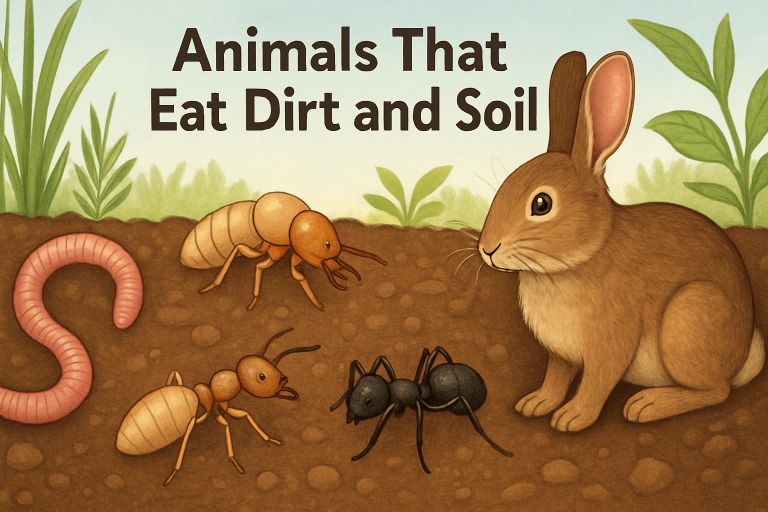
1. Mineral Supplementation
Many herbivores and frugivores consume soil to obtain vital minerals lacking from their regular diet. Fruits and leaves, especially in tropical environments, can be acutely deficient in sodium, potassium, calcium, magnesium, phosphorus, and trace minerals. Elephants and other large mammals actively seek out mineral-rich soils—often at so-called “mineral licks”—sometimes migrating over long distances to access these sites.
In forest elephants, for example, studies have shown that mineral licks in Central Africa often form over geologically unique soils, particularly those high in minerals like sodium. The elephants’ knowledge of these sites is culturally transmitted across generations.
2. Detoxification and Chemical Defense
Herbivorous animals regularly ingest plants containing natural toxins—alkaloids, tannins, and phenolics. Consuming clay or particular soil types helps bind these toxins, rendering them harmless within the animal’s digestive tract. This is seen in South American parrots, who rely on clay licks to safely consume toxin-rich seeds and fruits; bats have also been shown to employ this strategy to rid themselves of plant-based toxins ingested during feeding.
Chimpanzees and other primates also demonstrate this behavior. Geophagic soils often contain specific clay minerals (such as kaolinite and smectite) with high cation-exchange capacities, which help adsorb and neutralize harmful plant compounds. Studies in Uganda’s Budongo Forest found that chimpanzees preferred certain soils that, when tested, were particularly effective at adsorbing phenolics from their diets and offered superior bioavailable iron.
3. Digestive Aid and Parasite Control
Soil consumption may help animals control intestinal parasites. Certain clays have antibacterial and antiparasitic properties or physically coat and flush parasites from the gut. In ring-tailed lemurs, for instance, geophagy is both a preventive and therapeutic behavior targeting parasitic infections.
4. Behavioral and Adaptive Responses
Geophagy is sometimes a seasonal behavior—practiced more frequently in periods when the usual diet shifts toward more toxic or nutritionally poor plants. In mountain gorillas, soil consumption increases during the dry season when their diet consists of plants higher in toxins or more difficult to digest.
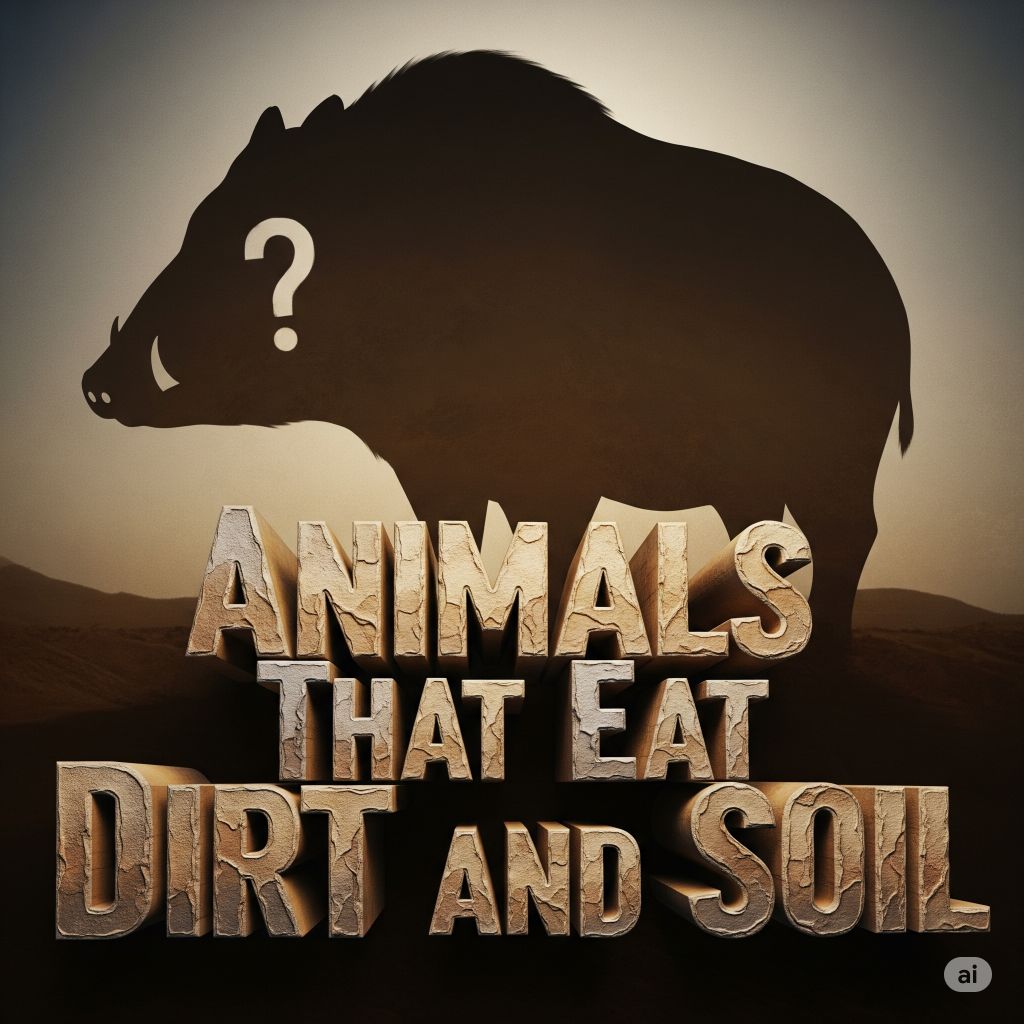
22 Notable Geophagous Animals and Their Soil-Eating Habits
The deliberate consumption of dirt or soil—known scientifically as geophagy—is a fascinating behavior woven throughout the animal kingdom. From gigantic elephants to colorful butterflies and hidden earthworms, geophagy serves crucial roles in nutrition, detoxification, and survival. This guide categorizes and explains a diverse array of animals that eat soil, revealing the underlying ecology and biology behind each.
Table: Selected Animals Known for Geophagy
| Animal | Geographic Region | Soil-Eating Behavior | Purpose/Benefit |
|---|---|---|---|
| Elephants | Africa, Asia | Dig, scrape, lick soils | Mineral supplementation, detox |
| Chimpanzees | Africa | Eat soil, clay, termite mounds | Detoxification, mineral supply, parasite management |
| Parrots | South America, New Guinea | Gather at clay licks | Neutralize toxins in seeds/fruits |
| Earthworms | Worldwide | Consume soil continuously | Digest organic matter, soil mixing |
| Tapirs | South America | Frequent mineral licks | Mineral supplementation |
| Butterflies | Many regions | “Mud-puddling” | Salt and mineral uptake |
| Cows, Goats, Pigs | Worldwide (domestic) | Lick or eat soils | Health and nutrient gain |
Mammals

1. Elephants
All species of elephants (African and Asian) are renowned soil eaters. They visit sites known as “mineral licks” where soil is rich in essential nutrients like sodium, calcium, potassium, magnesium, and phosphorus.
Elephants consume soil to compensate for mineral deficiencies in their largely plant-based diet. With powerful trunks, they dig or scrape at the earth, and their knowledge of the richest mineral licks is passed down generations—a cultural behavior observed among herds. The consumption of soil not only supports their immense physiological needs but can also detoxify plant compounds ingested from leaves and bark. These “licks” also shape the local landscape and serve as hotspots of animal activity.
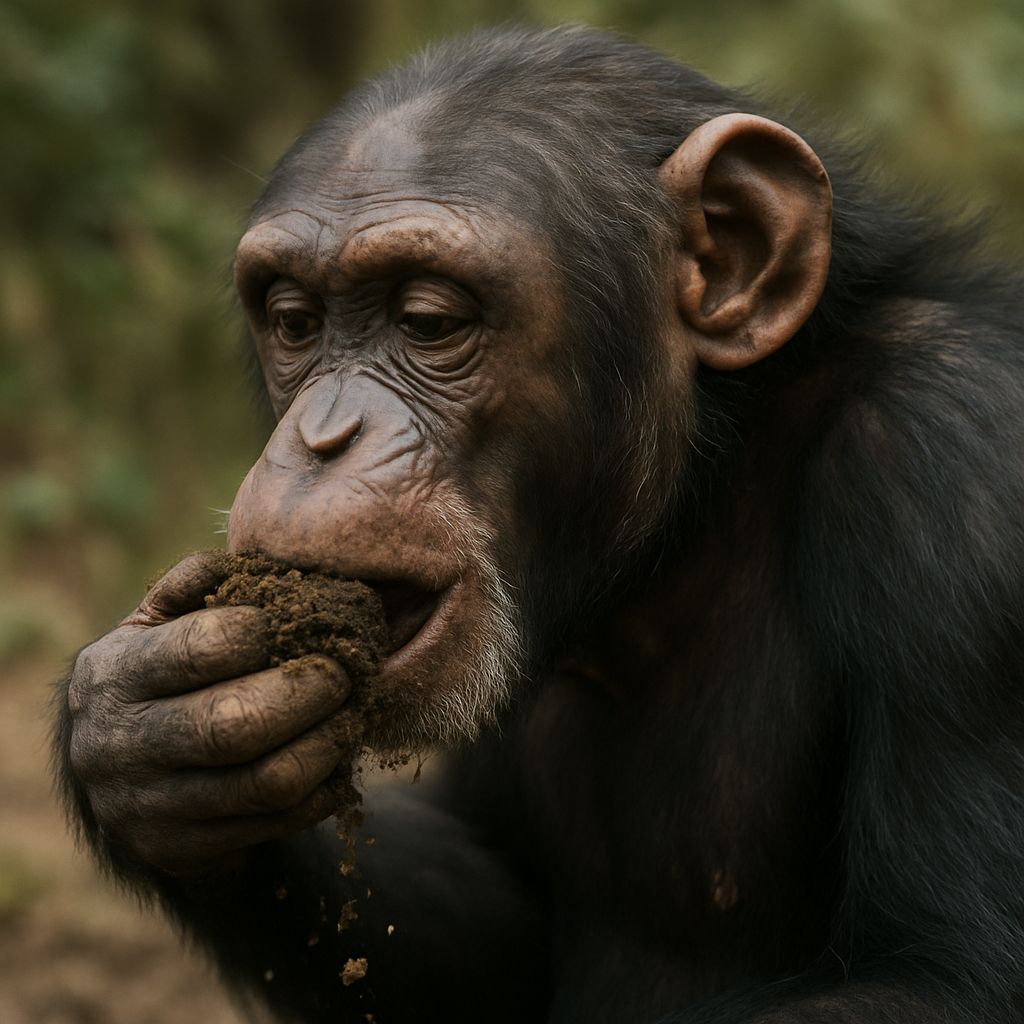
2. Chimpanzees
Chimpanzees across African forests routinely practice geophagy. They may eat soil directly from the forest floor or consume the earth of termite mounds. This behavior primarily aids in neutralizing plant toxins—especially when chimpanzees eat rough, tannin-rich leaves.
Specific soils high in kaolinite or smectite help bind and safely remove these chemicals from their system. Soil consumption also provides vital minerals like iron, and helps manage intestinal parasites. Notably, chimpanzees display selectivity in their choice of earth, favoring soils with particular detoxifying or nutritional profiles.
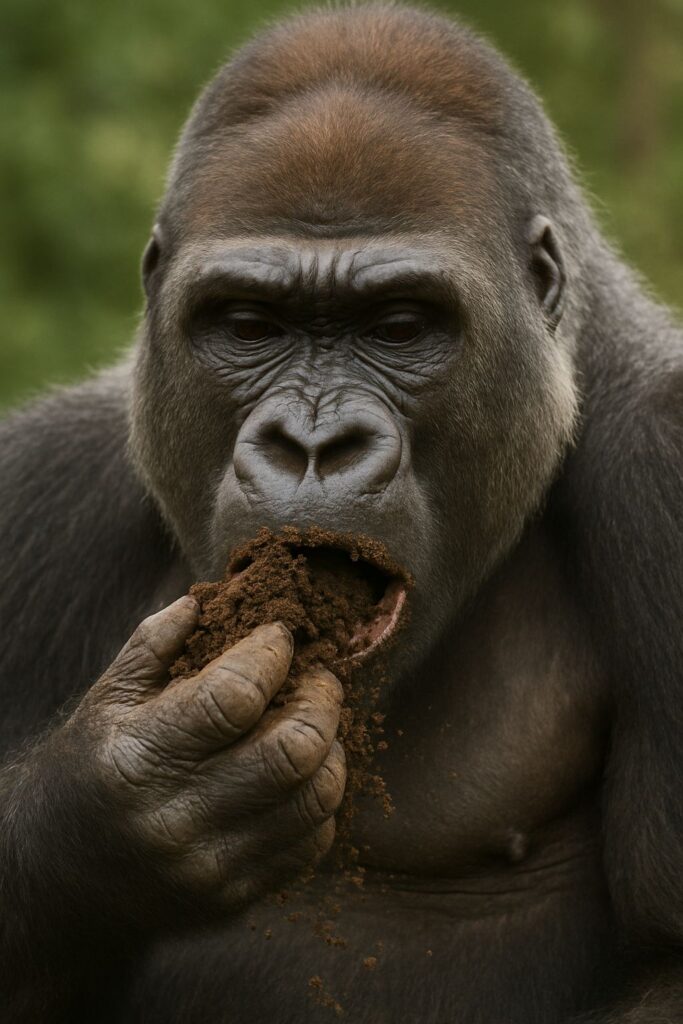
3. Gorillas
Mountain gorillas in Central Africa especially resort to soil eating in challenging dry seasons, when their diet becomes steeped with bitter, toxin-laden plants. Ingesting clay-rich earth aids in redeeming their digestive tracts from these natural toxics and provides minerals lacking in seasonal foliage.
Gorillas are selective, choosing soils with optimal properties for detoxification and mineral gain. Geophagy is a seasonal, adaptive behavior that helps gorillas survive periods of poor plant quality.
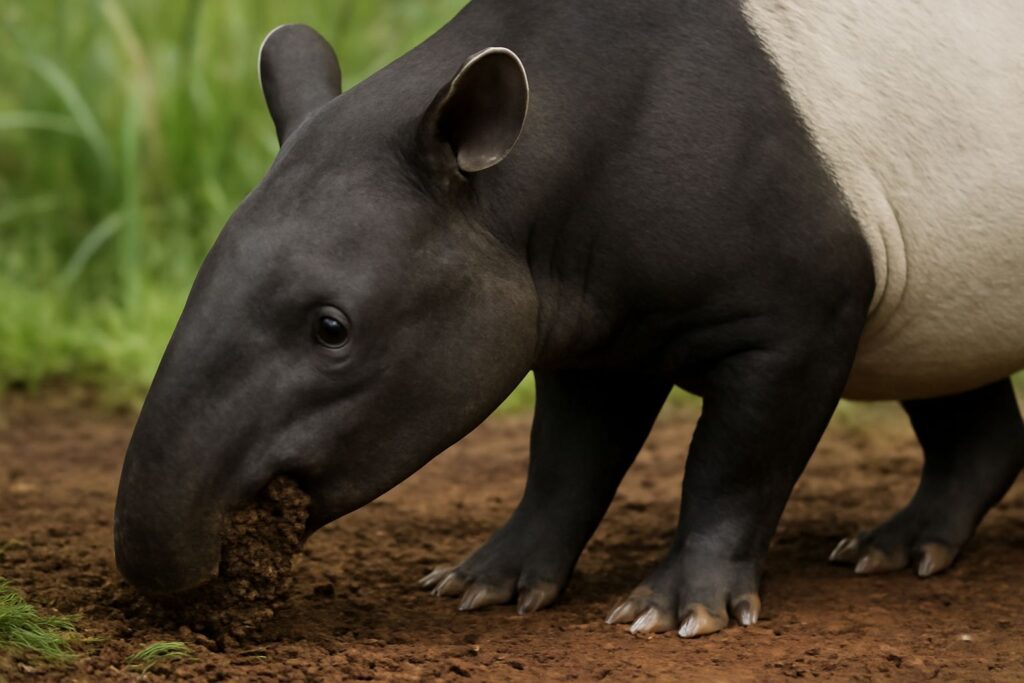
4. Tapirs
Tapirs, native to South America and Southeast Asia, frequently visit riverbanks and exposed licks to ingest soil. In mineral-poor tropical rainforests, especially, clay and soil become primary sources of sodium and essential micronutrients otherwise scarce in their diet of leaves and fruit.
Geophagy is especially pronounced in reproductive females, who need intensified mineral intake during pregnancy and lactation, ensuring population health and survival.
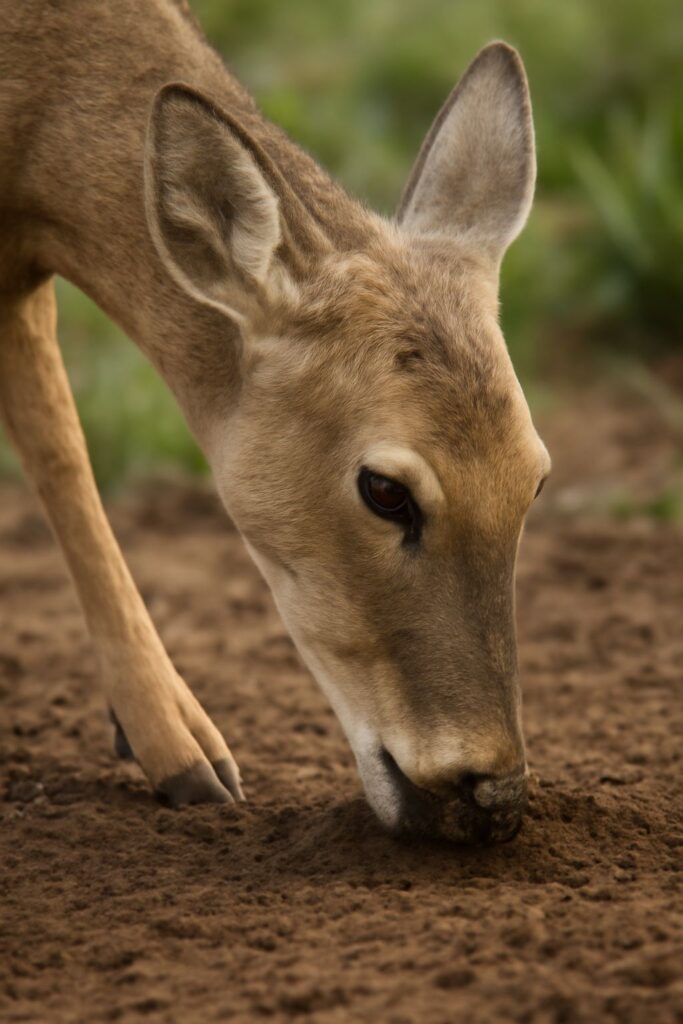
5. Deer
Various deer species—including white-tailed, mule, and red deer—intentionally seek out and consume mineral-rich earth, particularly while growing antlers or gestating. These sites often emerge near natural springs or where soil composition is notably high in sodium and calcium.
Deer geophagy is most common in spring and summer but occurs year-round. This mineral ingestion supports skeletal growth and reproductive success.

6. Peccaries
Peccaries, often called “New World pigs,” inhabit Central and South America. These gregarious animals are commonly observed visiting mineral licks or digging up soil.
Geophagy supports their detoxification of plant chemicals (from their omnivorous and tough-forage diet), and supplementation of critical minerals, especially salt in remote forests. The behavior is particularly noticeable in species ranging across mineral-poor zones.
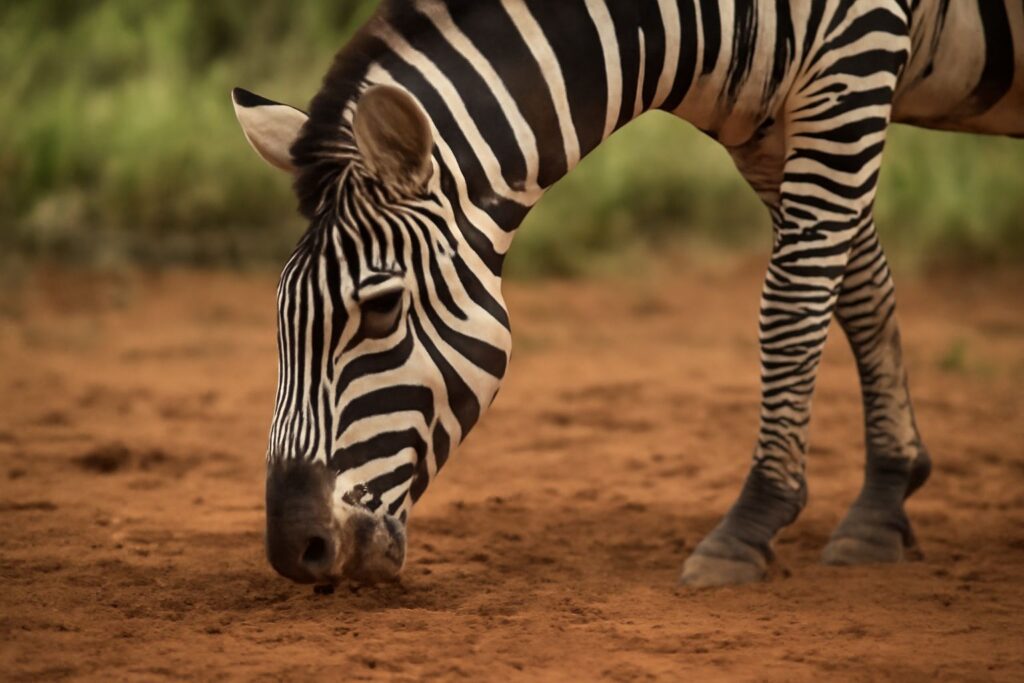
7. Zebras
African zebras routinely consume soil, particularly during dry seasons when grasses lack minerals. They dig with their hooves or graze exposed soil at mineral licks. Key reasons for this behavior include sodium supplementation (almost absent in typical savanna grasses) and balancing their electrolytes for endurance migrations. Access to mineral-rich soil is vital for zebra health and reproductive vigor.
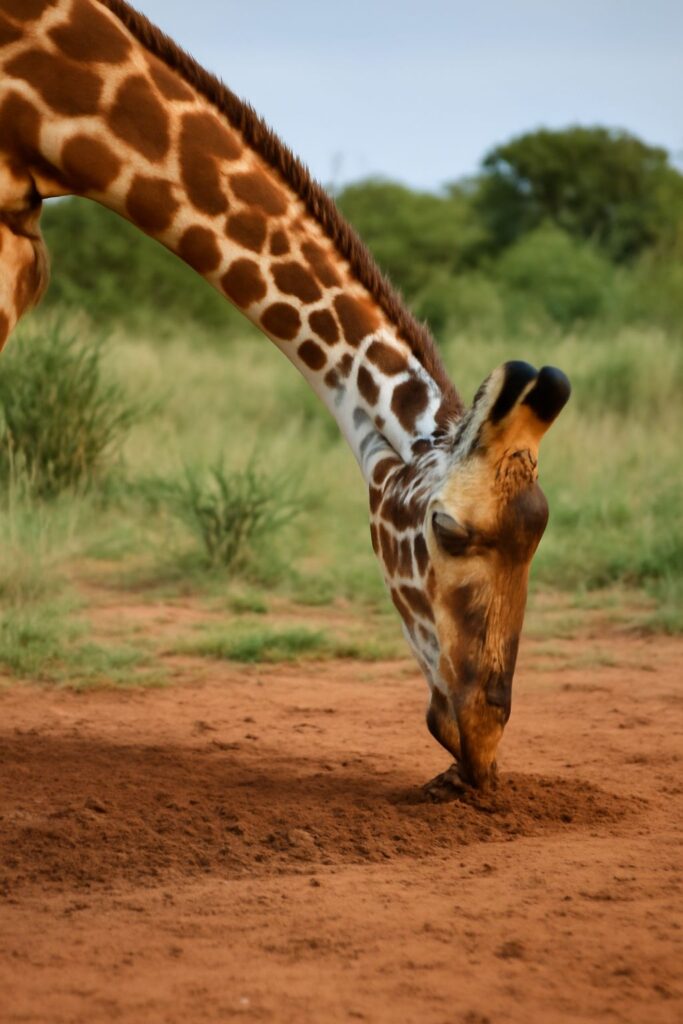
8. Giraffes
Giraffes, though famed for their browsing habits, supplement their diet by ingesting soil in areas with high mineral content. This behavior compensates for minerals like calcium and sodium absent from the leaves and twigs they primarily eat. Soil supplementation is especially important for lactating females and younger, fast-growing giraffes—supporting strong bone and muscle development.
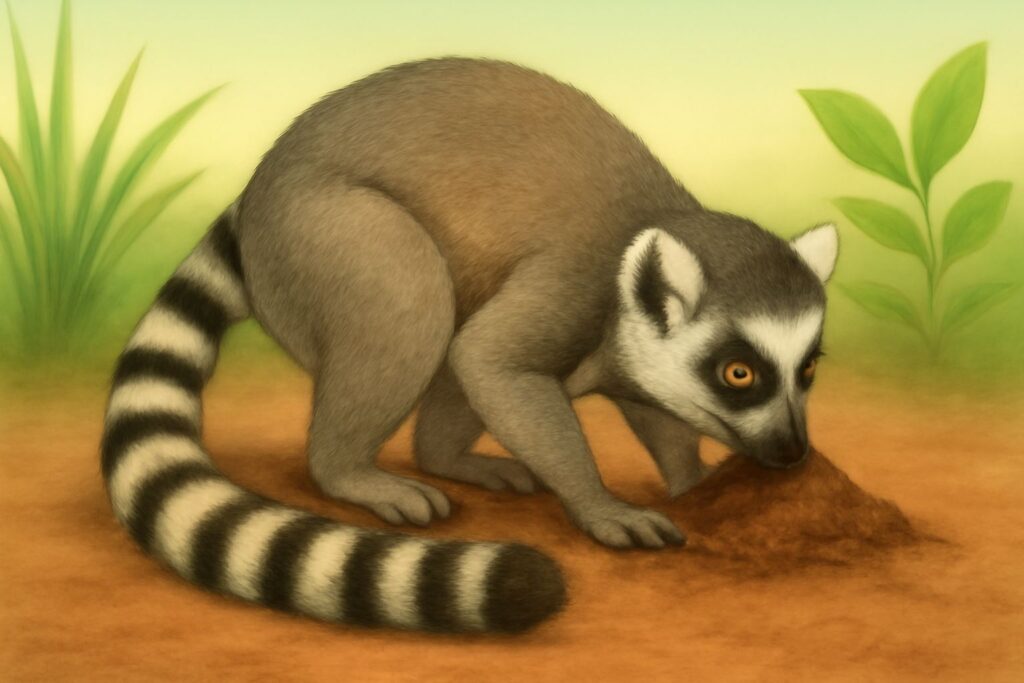
9. Ring-tailed Lemurs
Madagascar’s ring-tailed lemurs eat soil, especially from termite mounds or patches rich in clay minerals. This behavior is key for combating intestinal parasites and managing plant toxins, especially during dietary shifts in dry seasons.
By controlling gut health and supplementing their mineral intake, geophagy helps sustain lemur populations in harsh, variable environments.
10. Rhesus Macaques
Rhesus macaques in Asia, particularly those living on islands or near coasts, have developed geophagy as a strategy for both mineral supplementation and digestive health.
By eating clay-rich soils, these primates can control intestinal parasites, bind to and neutralize tannins in leaves, and access bioavailable iron and other essential nutrients. Soil consumption spikes seasonally, especially when their diets shift to less nutritious or more fibrous foods.
Birds

11. Parrots and Macaws
Nowhere is avian geophagy more dramatic than in South America, where macaws and parrots gather by the thousands at riverbank clay licks in the Amazon.
These birds feed on seeds and fruits often laden with natural toxins. The clay they eat not only supplements their sodium intake but also binds and neutralizes harmful plant chemicals within the digestive system.
Parrots are profoundly selective, often targeting specific, mineral-rich soil strata. These licks are crucial ecological resources and cultural gathering points for flocks, affecting breeding and migratory patterns.
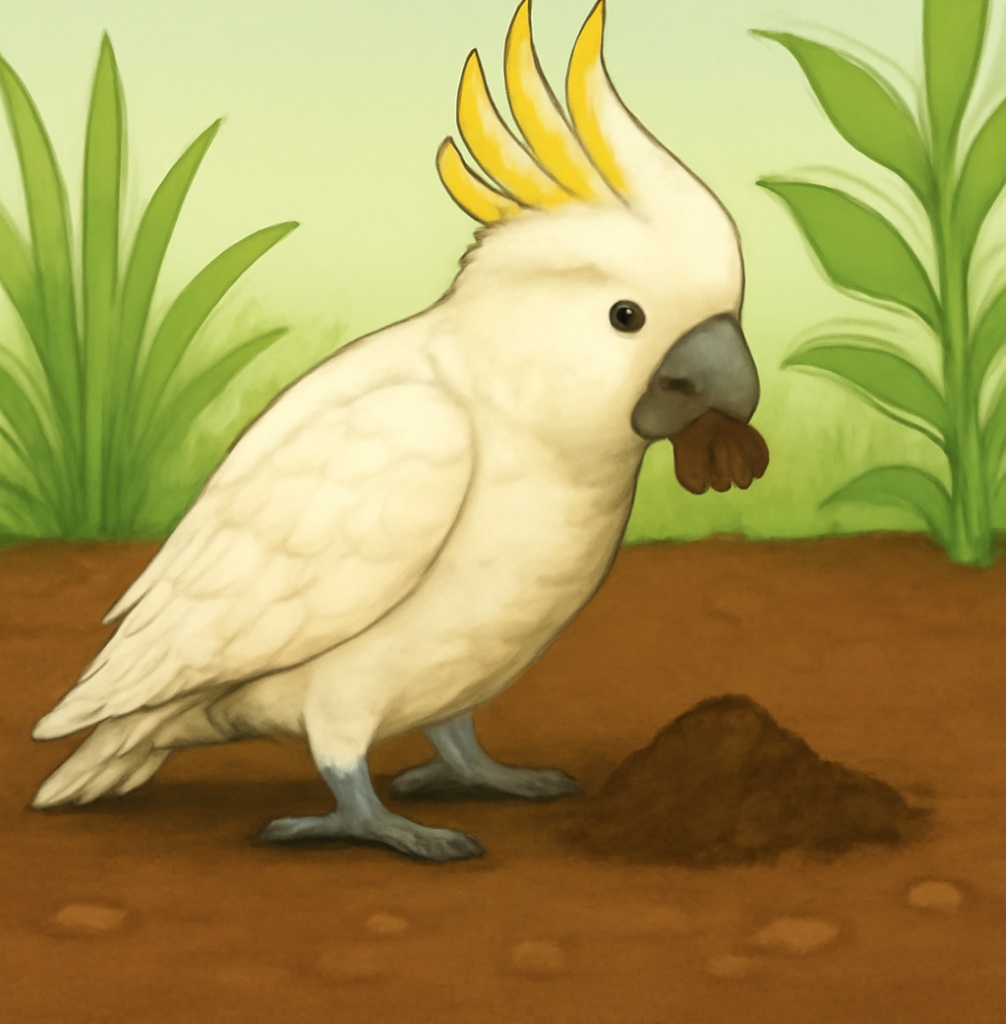
12. Sulphur-crested Cockatoos
In Papua New Guinea and northern Australia, sulphur-crested cockatoos are observed eating clay-rich soils from riverbanks or exposed cuttings. The primary benefits are similar to those seen in New World parrots: sodium and mineral supplementation, as well as detoxification of plant alkaloids and toxins.
Such geophagy is especially important in the cockatoo’s largely seed-based diet, ensuring optimal nutrition and reproductive health.
Bats
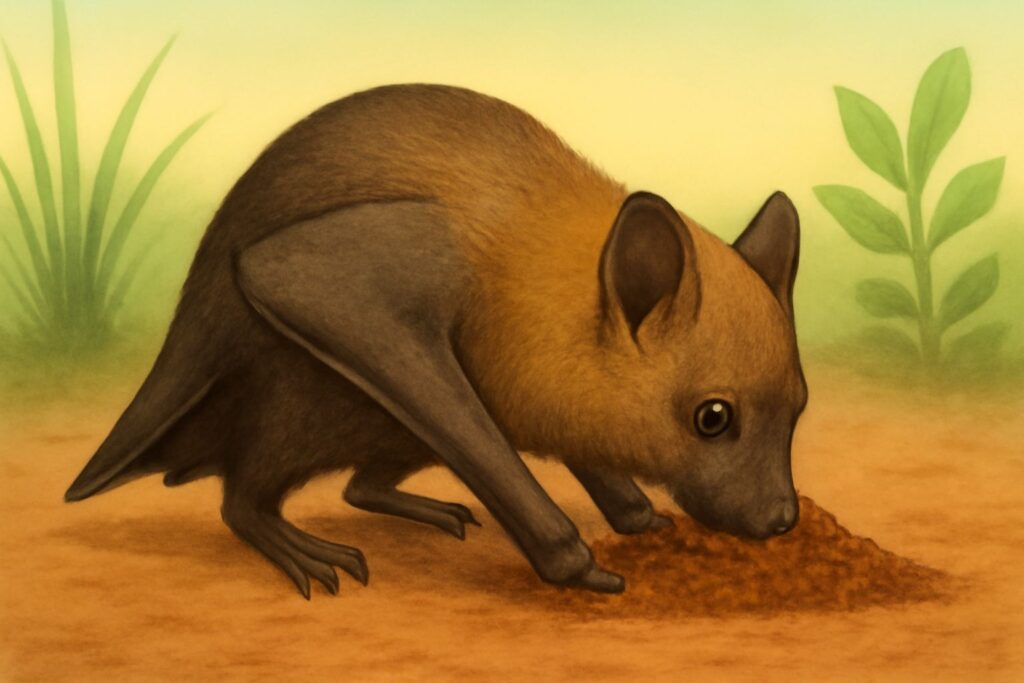
13. Fruit Bats
Many Amazonian fruit bats, as well as fruit-eating species in Africa and Asia, regularly visit clay licks and consume earth. Though some bats are insectivorous, soil eating is concentrated among fruit bats whose diets are rich in plant secondary compounds (natural toxins).
Eating dirt allows these bats to detoxify their meals and possibly supplement certain micronutrients missing in fruit. This behavior is especially vital for pregnant and lactating females, who have increased nutritional and detoxification needs.
Insects and Invertebrates
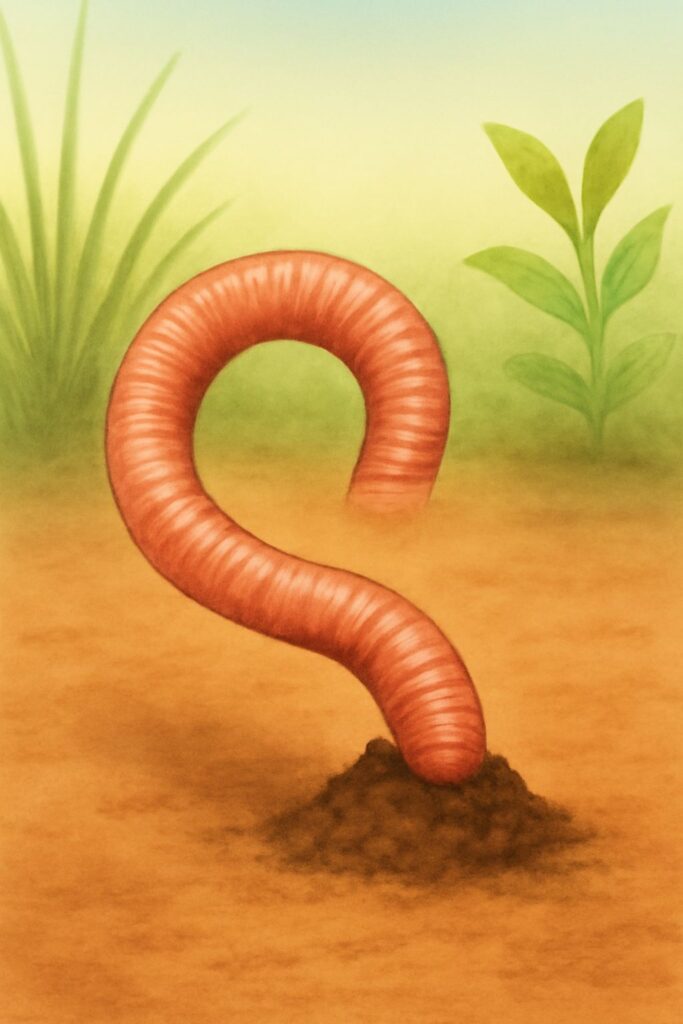
14. Earthworms
Earthworms are perhaps the world’s ultimate soil eaters, consuming dirt as their primary food. As they tunnel and digest organic matter mixed in soil, they play critical roles in decomposition, nutrient cycling, and soil aeration.
Their ingestion and excretion of earth result in “worm castings,” which are exceptionally rich in nutrients such as phosphorus and nitrogen. Earthworms are considered “ecosystem engineers” because their activity helps maintain soil structure and fertility, affecting virtually all land-based food webs.
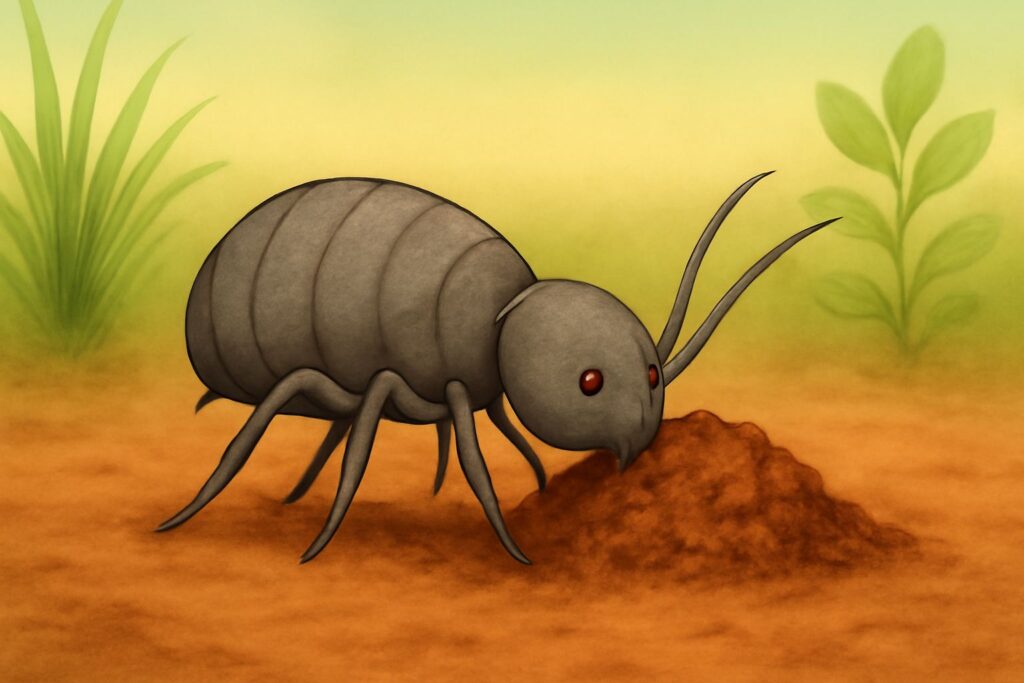
15. Termites
Termites, particularly the mound-builders of Africa, Asia, and the Americas, ingest vast quantities of soil in the process of constructing their elaborate nests and foraging tunnels. Their digestive systems, specialized in breaking down plant cellulose, benefit from the minerals in soil. The ingestion and excretion of soil by termites contribute to soil turnover, fertility, and aeration. Geophagy among termites is not only integral to their own survival but also influences the entire surrounding ecosystem.
16. Springtails
Springtails are tiny, soil-dwelling arthropods found worldwide. They ingest soil particles as part of their diet, which consists mainly of fungi, decaying plant material, and bacteria within the earth.
By eating and excreting soil, springtails accelerate decomposition and nutrient cycling processes—a small but vital cog in the broader soil ecosystem. Their survival and abundance underpin the success of countless plants and animals living above ground.
Other Mammals and Diverse Soil Eaters
17. Cattle
Cattle, both wild and domesticated, sometimes consume soil—especially when suffering from mineral deficiencies, such as low sodium or phosphorus. Soil eating is most commonly observed during grazing on nutrient-poor pastures, after calving, or when transported to new ranges.
This behavior prompts many farmers to supplement their herds with commercial salt or mineral licks, mimicking the natural geophagy seen in the wild.
18. Goats and Sheep
These livestock species also engage in geophagy, particularly in arid regions or on poor rangeland. Soil consumption helps fulfil mineral and micronutrient requirements not met by grazing alone.
Creating mineral licks or providing access to natural soil patches reduces health issues and supports growth, reproductive health, and wool or milk production in these animals.
Primates (Further Examples)
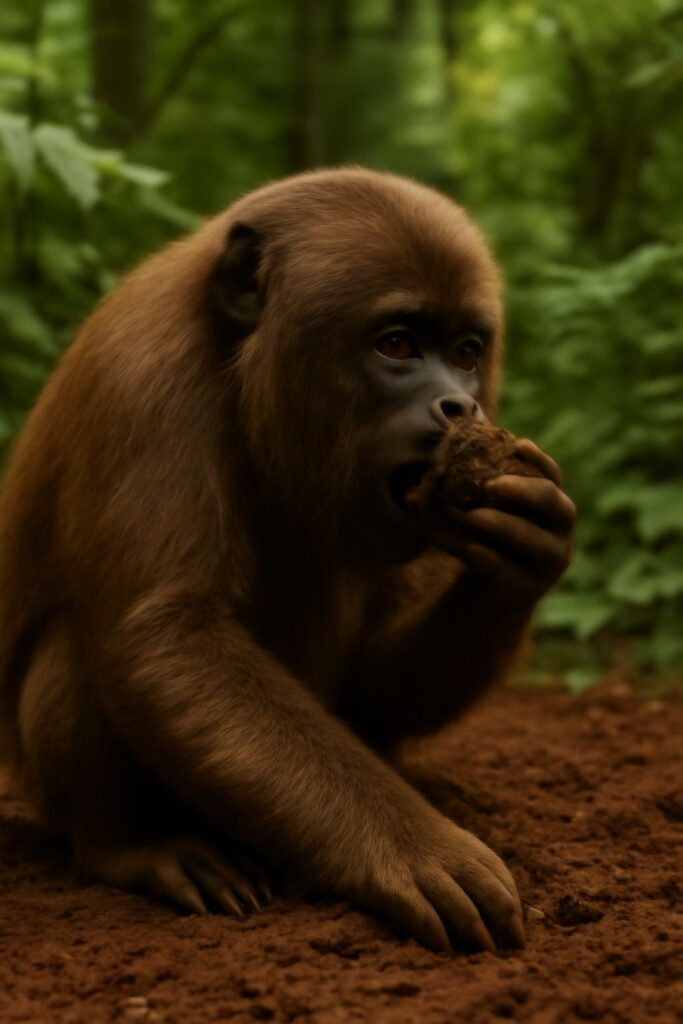
19. Howler Monkeys
Howler monkeys in South America, especially red-handed species, perform geophagy during the dry season when their leafy diet becomes high in plant toxins and fiber.
By eating soil—often from termite mounds or riverbanks—the monkeys neutralize toxins and boost their intake of vital minerals. The behavior is essential for maintaining health and reproductive fitness, and is linked to seasonal changes in available food.
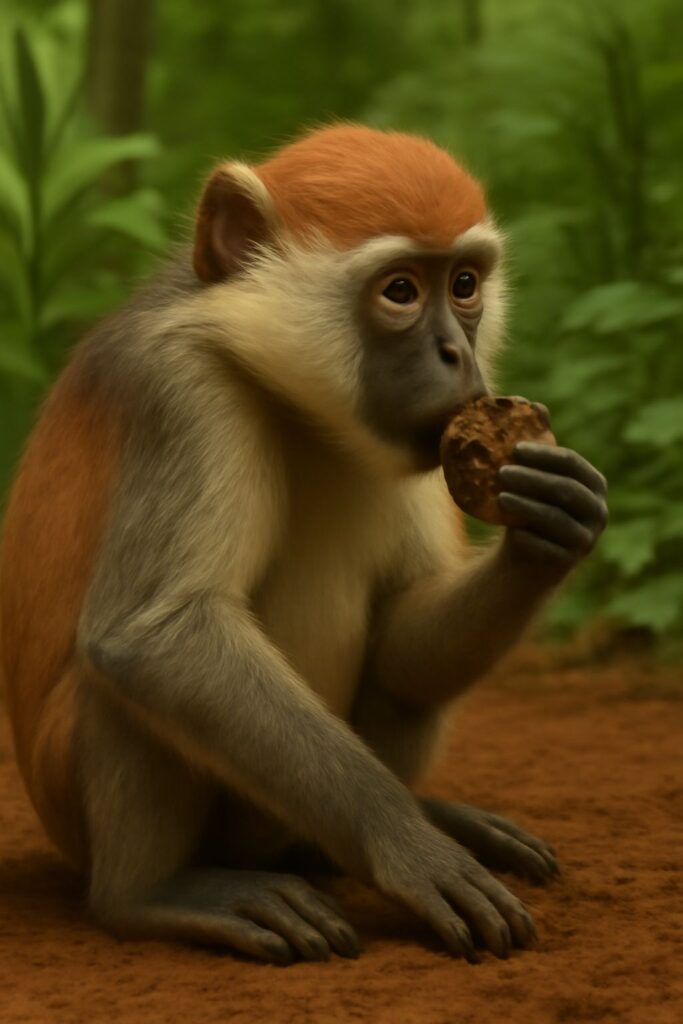
20. Colobine Monkeys
Colobine monkeys in Southeast Asia are highly selective geophagists. They frequent salt licks and choose mineral-rich clays that help manage the high-fiber, toxin-laden diet their unique stomachs require.
Geophagy in these monkeys is especially observed among pregnant and lactating females, as well as young monkeys in the process of weaning. The behavior underscores the adaptive complexity within primate dietary strategies.

21. Wolves
Wolves are apex carnivores primarily consuming meat, but there are rare observations of wolves ingesting small quantities of soil, usually incidentally while feeding on prey or scavenging. Unlike classic geophages, wolves do not routinely seek out earth for nutrition.
However, in rare cases, carnivores like wolves may ingest dirt when suffering from digestive upsets, attempting to induce vomiting, or potentially to supplement minerals lacking in their diet from prey. Such behavior is not a hallmark of their ecology and is not considered intentional soil eating as seen in herbivorous species

22. Antelopes
Antelopes—encompassing various grazing and browsing species of Africa and Asia—are notable for their mineral-seeking behavior, especially in habitats with nutrient-poor soils. Many antelopes visit natural lick sites to obtain essential minerals such as sodium, calcium, and phosphorus, which are often deficient in their principal forage grasses and browses.
Roan antelopes, for instance, are recorded chewing on soil and even bones to supplement minerals, especially lactating females. The need for geophagy intensifies during dry seasons, when forage quality is lowest or physiological demands are highest. Consuming soil helps balance electrolytes, supports reproduction, and fortifies bone and muscle development
Other Notable Soil-Eating Animals
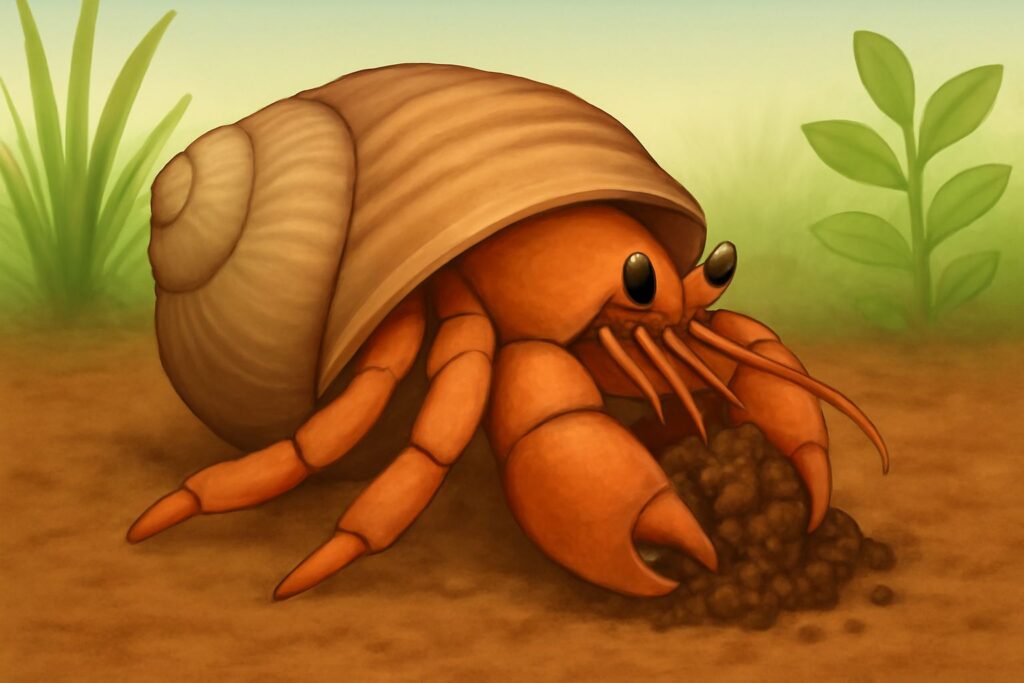
23. Hermit Crabs
Land-based hermit crabs interact with and consume soil in their substrate, primarily as part of burrowing and molting behaviors. Eating small amounts of earth helps with mineral absorption, digestion, particularly to regain calcium and trace elements required for shell growth.
In wild and captive conditions, this geophagy is normal and necessary, especially during high-stress physiological events like molting.
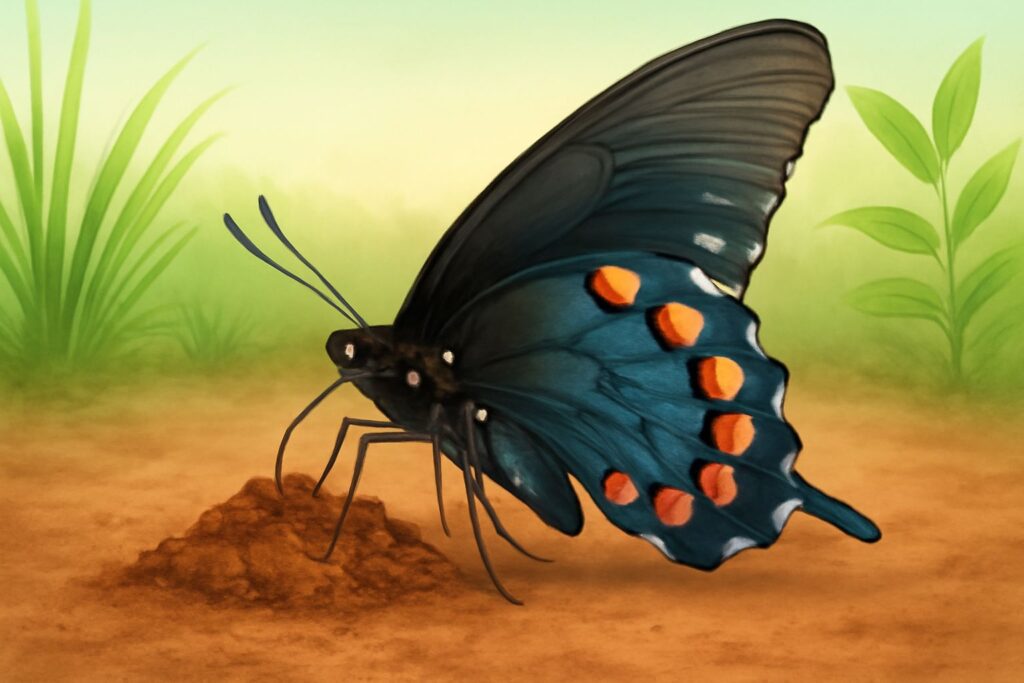
24. Butterflies
Butterflies commonly exhibit “mud-puddling,” a behavior in which they sip mineral-rich water from moist soil, mud, or dung.
Males are particularly active in mud-puddling as it helps supplement their nectar diet with sodium and essential minerals, which they later transfer to females during reproduction. This seemingly delicate act is vital for butterfly health, longevity, and reproductive success.
25. Dung Beetles
Dung beetles are most famous for eating dung, not soil or plain dirt. Their diet primarily consists of the feces of herbivorous and omnivorous animals. They select this nutrient-rich material for its undigested plant matter, essential minerals, and moisture content.
While some species may supplement their diet with decaying leaves, fruits, fungi, and even small invertebrates, dung remains their staple food. Adult dung beetles often filter out the liquid part of dung, which contains vital nutrients, while larvae feed on solid dung balls prepared by their parents. They rarely consume actual soil or dirt except incidentally while burying dung or creating tunnels under.
Ecological Significance
Soil Biodiversity and Nutrient Cycling
Geophagy influences entire ecosystems. By mixing, consuming, and excreting soils, animals like earthworms, termites, and burrowing mammals enhance soil aeration, fertility, and nutrient flow. Larger soil eaters, like elephants and tapirs, can change the landscape itself, creating mineral licks and influencing the spatial dynamics of plant and animal populations.
Animal-Mediated Soil Transport
When animals eat and later excrete soil, they move minerals across different areas—sometimes over great distances. This can help restore depleted soils or introduce rare minerals to new habitats, subtly affecting plant growth and local ecosystems over time.
Health Risks and Drawbacks
While geophagy has multiple adaptive benefits, it can also carry risks. Soils may harbor pathogens, parasites, or toxic substances such as heavy metals. In some cases, excessive soil ingestion can lead to digestive obstructions or the accumulation of harmful compounds. However, in the wild, animals typically display a preference for specific soil types or locations that minimize such dangers.
Human Geophagy: Parallels to Animal Behavior
Though not the central focus, it is worth noting that humans too practice geophagy, particularly among pregnant women and children in some cultures, as well as among those experiencing mineral deficiencies or specific cravings (a condition called pica). In many societies, certain clays are sold for medicinal or culinary purposes, especially for their detoxifying qualities or ability to ease digestive complaints.
Conclusion
Throughout the animal kingdom, the intentional consumption of dirt and soil emerges as a fascinating strategy to overcome environmental challenges. From mineral supplementation and toxin removal to parasite management and ecosystem modification, geophagy is a complex and beneficial behavioral adaptation. Far from being a bizarre or anomalous habit, the eating of soil underscores both the ingenuity of animals and the intricate interdependence between life and earth.
By understanding geophagy, scientists and conservationists gain unique insights into animal nutrition, ecosystem health, and even the subtle ways in which animals engineer the environments they call home.
References.
- https://www.discovermagazine.com/planet-earth/eat-dirt
- https://en.wikipedia.org/wiki/Geophagia
- https://earthlife.net/what-eats-dirt/
- https://tsavotrust.org/geophagy-why-do-animals-eat-soil/
- https://pubmed.ncbi.nlm.nih.gov/31278584/
- https://www.sciencedirect.com/topics/earth-and-planetary-sciences/geophagy

94% of pet owners say their animal pal makes them smile more than once a day. In 2007, I realized that I was made for saving Animals. My father is a Vet, and I think every pet deserves one. I started this blog, “InPetCare”, in 2019 with my father to enlighten a wider audience.
